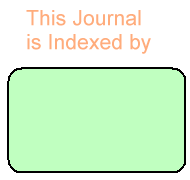D Raja1,
D Poornima1,
K Bhaskar1,
M Saravanan2 ![]()
For correspondence:- Saravanan Email: msaravanan72@hotmail.com Tel:+60355144926
Received: 13 August 2012 Accepted: 29 December 2013 Published: 20 February 2014
Citation: Raja D, Poornima D, Bhaskar K, Saravanan M. Ispaghula Husk-Based Extended Release Tablets of Diclofenac Sodium: Formulation, Evaluation and In vitro Release Studies. Trop J Pharm Res 2014; 13(2):205-210 doi: 10.4314/tjpr.v13i2.6
© 2014 The authors.
This is an Open Access article that uses a funding model which does not charge readers or their institutions for access and distributed under the terms of the Creative Commons Attribution License (http://creativecommons.org/licenses/by/4.0) and the Budapest Open Access Initiative (http://www.budapestopenaccessinitiative.org/read), which permit unrestricted use, distribution, and reproduction in any medium, provided the original work is properly credited..
Purpose: To formulate extended-release tablets of diclofenac sodium based on ispaghula husk.
Methods: Tablets with varying proportions of diclofenac sodium and ispaghula husk were formulated by wet granulation technique at a fixed compression force of 10 kN. The formulated tablets were evaluated for physicochemical parameters as well as by Fourier transform infrared spectroscopy (FTIR), differential scanning calorimetry (DSC) and x-ray diffraction (XRD).
Results: Content uniformity, weight variation, thickness and friability of the formulated tablets were within acceptable limits. The hardness of the tablet decreased from 5.4 to 4.2 kg/cm2 with increasing quantity of ispaghula husk in the formulation. In contrast, disintegration time increased from 12 to 70 min with increasing amount of husk. Tablets formulated with 1:0.25 and 1:0.5 drug/husk ratio failed to extend drug release whereas tablets prepared with 1:0.75 and 1:1 ratio extended release up to 5 and 6 h, respectively. FTIR, DSC and XRD analysis of tablets revealed the absence of diclofenac–ispaghula interaction and crystalline nature of diclofenac sodium. Drug release data fitted well with Korsmeyar-Peppas and the n value of 0.98 indicate non-Fickian diffusion. The tablets were stable on storage and retained its physicochemical properties within acceptable limits.
Conclusion: The results indicate the possibility of formulating extended-release tablets based on ispaghula husk. The tablets were stable during storage and free from drug-excipient interactions. However further studies are required to ascertain the safety of the husk and to optimize the release properties of the tablets.
Archives


News Updates